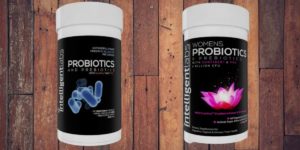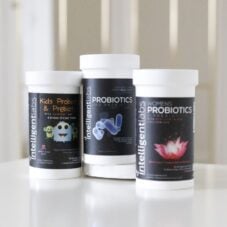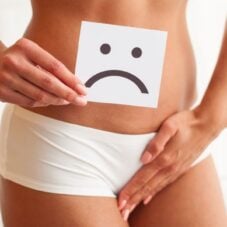Probiotics
Should You Take Probiotics For Yeast Infections?
Summer is always an exciting time of year. It’s warm and inviting and fun! But it’s annoying when you can’t do the things you love because of a yeast infection. Yeast thrives in the warmth and humidity of summer when you’re bound to get sweaty down there. Fortunately, there are a number of treatment options available, so summer isn’t completely ruined for you. Today, we’re going to take an in-depth look at using probiotics for yeast infections. Does it really work? Or is it fake news? Read on to find out!
Table of Contents
So… How Can You Tell If You Have A Yeast Infection?
You’d think it would be easy to identify a vaginal yeast problem, but the symptoms are actually quite similar to other conditions. If you experience symptoms like a fishy smell, intense itching, thick vaginal discharge, a burning sensation when peeing, pain during sex, and in severe cases, fissures in your vaginal wall, then you most likely have a yeast infection. That said, the surefire way to know if you have a yeast infection is to get checked out by a licensed physician. Infections in such a sensitive area can turn bad really fast, so it’s best to cross out other possible issues.
But What Causes Yeast Infections In The First Place?
Well, yeast causes these nasty infections. More specifically, it’s a type of yeast called Candida albicans that causes these problems. Other types can also cause infections, but they’re not as common as Candida albicans and may require a different treatment path.
Yeast is a type of fungus that resides in the body. It’s commonly found in the mouth, nose, skin, digestive tract, and female genitalia. But it’s not the only live microorganism living within us. There’s a whole microbiome of various microorganisms in the human body; this includes various species of fungi (including yeast) and bacteria.
When the balance in the microbiome is disrupted, the organisms that keep the yeast in check can die off, which leads to a growth in the yeast population. When this happens, you’ll start noticing various symptoms associated with a yeast infection.
So, what are these things that disrupt the balance in your microbiome?
There are a number of reasons, actually. One is prolonged antibiotic use. Antibiotics can kill off the friendly bacteria in your body, including those that keep yeast in control. Another is high blood sugar levels, which is common amongst prediabetics, diabetics, and those with PCOS. Sugar is responsible for yeast growth. If you fail to keep your blood sugar level in control, then yeast growth goes into overdrive.
A weak immune system is another leading cause of yeast infections. So, watch out for anything that weakens your immunity as that can cause a whole lot of problems for you, not just yeast infection. Pregnant women and those using hormonal contraceptives for birth control are also susceptible to infection since hormones can disrupt the balance in your microbiota.

Let’s Take A Look At Some Treatment Options For Yeast Infections
There are a number of treatment options for yeast infections. These come in either oral or topical form. Oral treatment includes taking an oral antifungal like fluconazole or a probiotic supplement that’s designed to restore balance in the vaginal flora. Topical application, on the other hand, means applying the treatment directly into the vagina.
Antifungal medication
An effective topical option would be vaginal therapy using antifungal medication such as clotrimazole, miconazole, and terconazole. These are usually available in cream or ointment form.
Probiotics supplement
Our special Women’s Probiotics supplement contains not only 6 billion CFU of 4 specially selected, bile-resistant probiotic strains, it also contains cranberry juice powder and D-mannose. These ingredients all work together to remove harmful microorganisms in the gut and urinary tract. It helps prevent urinary tract infections, bacterial vaginosis, and other female genitalia issues brought about by an imbalanced vaginal flora.
Yogurt
For homemade remedies, a popular option is yogurt. Yogurt contains a good dose of probiotics or good bacteria in it, most notably Lactobacillus bacteria, so it can help fight off a growing yeast population. But take note – not any yogurt will do!
There are tons of yogurts in the supermarket that are loaded with unhealthy doses of sugar. You need to use one that’s plain, that is, it has no added sugar or sweeteners in it. You may either apply the yogurt directly to your external genitalia (vulva) or put it inside your vagina. Moreover, you may use a finger to do this or use a tampon applicator to get the job done.
If you’re experiencing itching or burning, then here’s a pro tip for you: leave your yogurt-filled tampon applicator in the freezer before applying it to the itchy spot down there.
Related article: The Truth Behind The Best Probiotic Yogurt
Apple cider vinegar
Another option that’s said to provide relief is an apple cider vinegar bath. The acid in the vinegar helps restore the vagina’s acid levels to normal. Add a couple of cups of ACV to warm water and soak the area for around 15-20 minutes. You should start to see some improvement in a few days.

How many billion probiotics should I choose?
Not all probiotics are created equal. There are plenty of probiotic supplements out there and it’s important to choose well-researched probiotic strains with proven yeast-fighting capabilities. That being said, choose a product that contains at least 1 billion CFUs of patented strains, not generic strains.
For our 6 billion CFU Women’s Probiotics, we made sure to choose patented strains that can withstand bile in your stomach, so they won’t die off before they arrive in your gut. Our proprietary probiotic blend is sourced through DuPont Danisco and includes the following strains – L. acidophilus La-14, B. lactis Bl-04, B. bifidum Bb-06, and B. longum Bl-05.
How long will it take for probiotics to work or treat the infection?
The timeline varies on the probiotic strains you’re using and its strength (CFU). Typically, it may take up to one to four weeks to see results.
How to prevent future yeast infections
A recurring infection is not a fun thing to experience. Here are some proactive steps you should take if you want to avoid future infection.
Avoid food that feeds the yeast

This means avoiding starchy food and sugar. So, rice, potatoes, bread, pasta, and cereals are out of the picture. Anything with sugar on it should also be eliminated from your diet. This includes dried fruit and fruit juices. Junk food should be thrown in the bin as it’s highly processed and unhealthy. Instead, stick to eating whole foods that are rich in healthy fats and lean proteins. Lastly, yeast thrives on yeast. So, eliminate anything with yeast on it. This includes beer and wine.
Eat more of the good stuff

Taking a spoonful or two of coconut oil every day can go a long way. You can eat it raw or add it to your coffee, tea, salads, etc. You can also use it to sauté and fry your food. Coconut oil is a powerful antifungal and kills that infamous Candida albicans strain more effectively than OTC medicine, fluconazole. For faster relief, it’s best to apply coconut oil topically by putting some into a clean tampon and then inserting it in the vagina.
Also, eat more garlic. It’s not your average spice. It’s a powerful antifungal that helps boost the immune system and fight the bad microorganisms in your body like yeast, bacteria, and viruses.
Take probiotic supplements

As mentioned earlier, probiotics can go a long way to restoring balance in your gut and controlling the Candida population. Depending on the severity of your yeast infection, we recommend you check out either of our two probiotic supplement varieties:
- Adult Probiotics & Prebiotics with 10 strains and 50 billion CFU
- Women’s Probiotics & Prebiotics with 4 strains, 6 billion CFU, cranberry juice powder, and D-mannose powder.
Find out when’s the best time to take your probiotic supplement for maximum effectiveness.
Avoid douching and using any perfumed feminine products
Douching may sound like a good hygiene practice, but it’s really not. It upsets the balance in your vagina and makes the area prone to an overgrowth of bad bacteria and yeast. Using any scented or perfumed product down there, such as tampons, pads, and feminine washes can irritate your vagina and vulva. It also promotes yeast growth.
Conclusion
Yes, taking probiotics for yeast infections is a legitimate treatment option. It kills the pesky yeast and restores balance in the vagina. Probiotic supplements are affordable and have a ton of health benefits, not just killing off Candida. It’s safe to take and has very little to no side effects. So, the next time you feel an infection starting up, take some probiotics and follow the tips we’ve outlined here to fix your problem!
💬 Something on your mind? Share your thoughts in the comments. We love hearing from curious minds.
📩 And while you’re here, join our newsletter for more smart stuff (and secret perks)!





